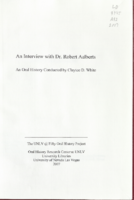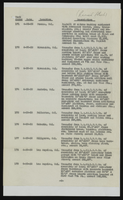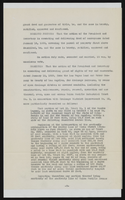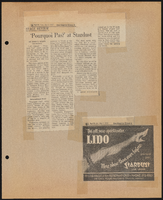Search the Special Collections and Archives Portal
Search Results

Letter from L. W. Edwards (Las Vegas) to George Allard (Carson City, Nevada), May 6, 1948
Date
Archival Collection
Description
Details of the monthly water charges for the Las Vegas Hospital with a complaint of their unfairness.
Text

Letter from A. M. Folger (Las Vegas) to Frank Strong, May 13, 1948
Date
Archival Collection
Description
Discussion of a school board's request to move a water main from an area they wished to relocate their athletic field to.
Text

Letter from E. E. Bennett to Howard W. Blanchard (Washington, D. C.), April 19, 1954
Date
Archival Collection
Description
Bennett was requesting the name of the chairman of the Senate Interior and Insular Affairs Committee as well as members so see if there were any that he could influence for a favorable passage of the water district right-of-way bills.
Text

Extract of minutes of special meeting of board of directors of Las Vegas Land and Water Company, held June 29, 1953
Date
Archival Collection
Description
Extract of meeting notes where the water company board approved of its sale to the water district. Document has embossed seal of Las Vegas Land and Water Company at the bottom.
Text

Order presented at a general session of the Public Service Commission of Nevada (Carson City) regarding the furnishing of surplus water, December 3, 1952
Date
Archival Collection
Description
The Nevada Public Service Commission grants approval of the Los Angeles & Salt Lake Railroad Company selling water to the Pacific Fruit Company with the expressed understanding that this does not make the railroad company a public utility within the meaning of the Public Service Commission Act.
Text

Letter from E. E. Bennett (Los Angeles) to William Reinhardt, January 4, 1952
Date
Archival Collection
Description
The Nevada State Engineer suggested that the Las Vegas Valley Water District purchase 1200 acres of "water bearing lands," but the District only wanted to purchase 679 acres.
Text

Transcript of interview with Dr. Robert Aalberts by Claytee D. White, November 16, 2006
Date
Archival Collection
Description
Text



